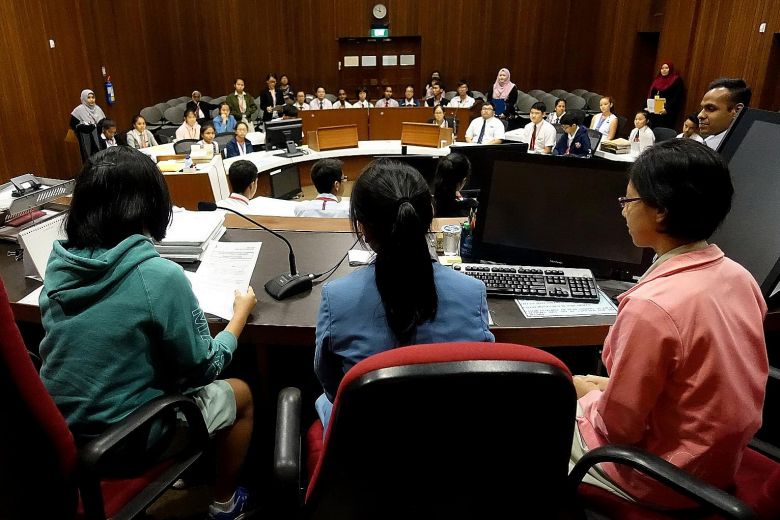Ninety-five student leaders from 48 secondary schools last week were involved in deciding the fate of “John”, a teenager who had allegedly punched another person in a nightclub.
“John” was a youth offender in a role-playing scenario, with the students acting out different parties in a courtroom, such as the prosecutor, the accused, the defence counsel and the judge.
The students were attending the “A Day In Court” seminar organised by the State Courts of Singapore.
The event introduces Singapore’s judicial system while complementing character-development programmes of schools.
Besides role-playing, students also attended presentations given by judges on the community court and Alternative Dispute Resolution (ADR) methods. This is the seminar’s fifth year, and this year’s turnout is the largest yet.
It was also the first time that students got to play the role of the judge. In previous years, a district judge would stand in during the mock court trial.
Students took up the roles with utmost gravity as they had to decide the offender’s punishment, while considering four principles – retribution, deterrence, prevention and rehabilitation – used by judges here to guide the sentencing process.
FATHOMING THE JUSTICE PROCESS
The seminar helps to allay all kinds of fears and apprehension from the public from a very young age. It also helps to set realistic expectations of what the court can do and what services are available.
MR DAVID LIM, a judge-mediator and long-time volunteer, on how the students could benefit from such a programme.
Mr Andre Tan, 44, director of communications at the State Courts, said the experience was a good opportunity for students to experience weighing the different factors that may come into play in a court trial.
The seminar is part of the State Courts’ outreach programme to the public. Mr David Lim, 55, a judge-mediator and a long-time volunteer at this event over the years, said that it helps to “allay all kinds of fears and apprehension from the public from a very young age. He said: “It also helps to set realistic expectations of what the court can do and what services are available.”
Mr Tan also hopes, through this programme, to dispel misconceptions which might have been brought about by pop culture like drama serials about the court.
“We really wanted to enlighten the community, starting with the children,” he said.
Some students said they were surprised to find that scenes they saw on television shows did not appear in the actual court.
For instance, real-life court cases were not as dramatic or loud, like those shown in dramas, said Amanda Min Min Skipper, 15.
The student from Singapore Chinese Girls’ School said: “I thought the courtroom would be exactly like what I saw on TV, but actually it’s much more formal and everybody is more calm.”
Other students also talked about their surprise at the absence of the judge’s gavel and the wigs that lawyers donned on television.
The students were also introduced to the mediation process in court. Silas Kirsh Philip, 16, from Punggol Secondary School, said this was his favourite segment of the day.
He was glad that the conflict-resolution skills imparted from the session was “something I can take back to school”, to aid him in his role as a student councillor.
This event also gives the State Courts a way of reaching out to the community through children – for instance when the students share their experiences with their friends and family, said Mr Tan.
Telling the public more about the courts “is a community effort, and there can be no better advocates than children”, Mr Tan added.
Article & picture from Straits Times


